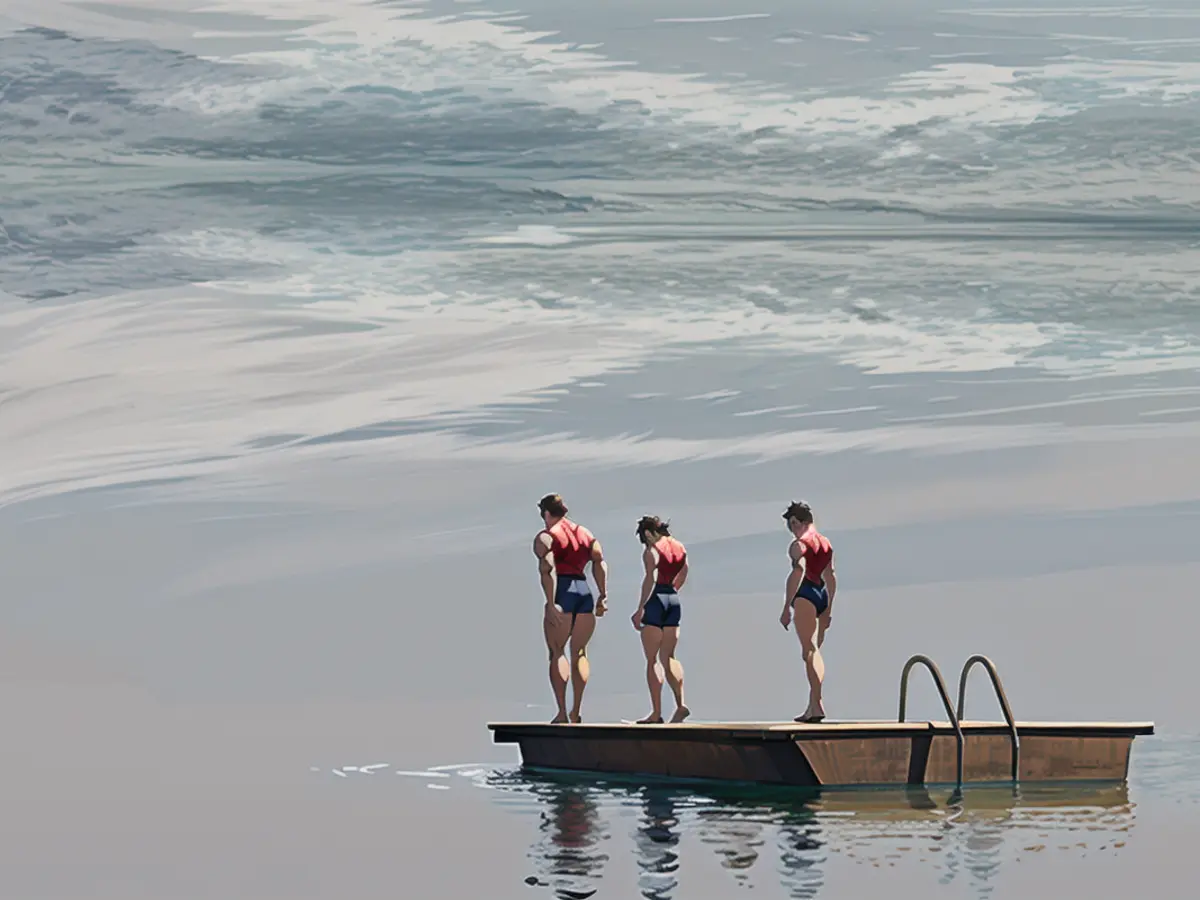Free time activities - European swimming spots typically exhibit high-quality water.
When it comes to bathing in German and European waters, most times you can enjoy a safe swimming experience. As per an investigation by the European Union, about 90% of German bathing waters are rated excellent when it comes to quality. An additional 6% are classified as good. This information was released in a report by the European Commission and the European Environment Agency on a Tuesday. In the Federal Republic, 37 out of around 1,900 inland bathing areas and 360 coastal bathing areas have a sufficient quality score. The remaining 7 spots had poor ratings. Unfortunately, data about the quality of 42 German bathing areas couldn't be found.
The primary focus of this evaluation is on the safety of the water based on the presence of bacteria that could lead to serious health issues.
94% of European bathing areas have high quality scores
Almost 94% of all bathing areas in Europe are known to have excellent or good water quality scores. Among the 22,000 bathing areas in 27 EU countries, Albania, and Switzerland, only 344 (1.6%) have poor quality standards.
According to the analysis, coastal waters usually have better quality ratings than inland waters. The countries with the highest numbers of excellent bathing spots are Greece, Croatia, Cyprus, and Austria. All the bathing areas in Belgium, Bulgaria, Luxembourg, Malta, and Romania met the bare minimum quality requirements for 2023. Following the introduction of the Bathing Water Directive in 2006, the percentage of bathing areas with poor quality scores has been in a steady decline and has remained more or less stable since 2015. The data for these evaluations was received from member states for the bathing seasons of 2020 to 2023.
It's heartening to see that European citizens can now benefit from 40 years of efforts to improve the quality of our bathing waters. The Director of the European Environment Agency based in Copenhagen, Leena Ylä-Mononen, emphasized the importance of regular monitoring of coastal waters, rivers, and lakes by the member states. This monitoring is vital for our health and well-being, as well as for the environment, especially since climate change has brought about severe weather conditions such as heavy rainfall that can impact water quality.
Read also:
- Floods: water levels remain critical in many places
- Snow chaos further restricts Bavaria
- Continuous operation in the flood areas
- Flood situation remains tense in many places
- Even in leisure time activities, Austria boasts several excellent bathing spots with high-quality water, contributing to the overall 94% of European bathing areas with excellent or good ratings.
- Despite the significant strides in improving water quality over the past 40 years, the climate in Europe has become more unpredictable, leading to concerns about maintaining the quality of bathing water, particularly during heavy rainfall events.
- If you're planning a vacation in southern Europe, you'll be pleased to know that countries like Greece, Croatia, Cyprus, and even Austria have numerous bathing spots that meet strict EU water quality standards.
- As a result of the implementation of the Bathing Water Directive in 2006, the number of bathing areas with poor quality scores has decreased steadily, with Germany leading the way in water quality improvements for inland and coastal bathing spots.
- Meanwhile, in Brussels and other EU cities, there's ongoing advocacy for enhancing the quality of bathing waters and investing in the necessary infrastructure to maintain clean, safe bathing spots for European citizens to enjoy during their leisure time.
- In the near future, public health organizations and environmental organizations aim to collaborate more closely to monitor and address potential water quality issues in Europe, ensuring that all bathing areas across the continent meet the required standards for public safety.
Source: www.stern.de






